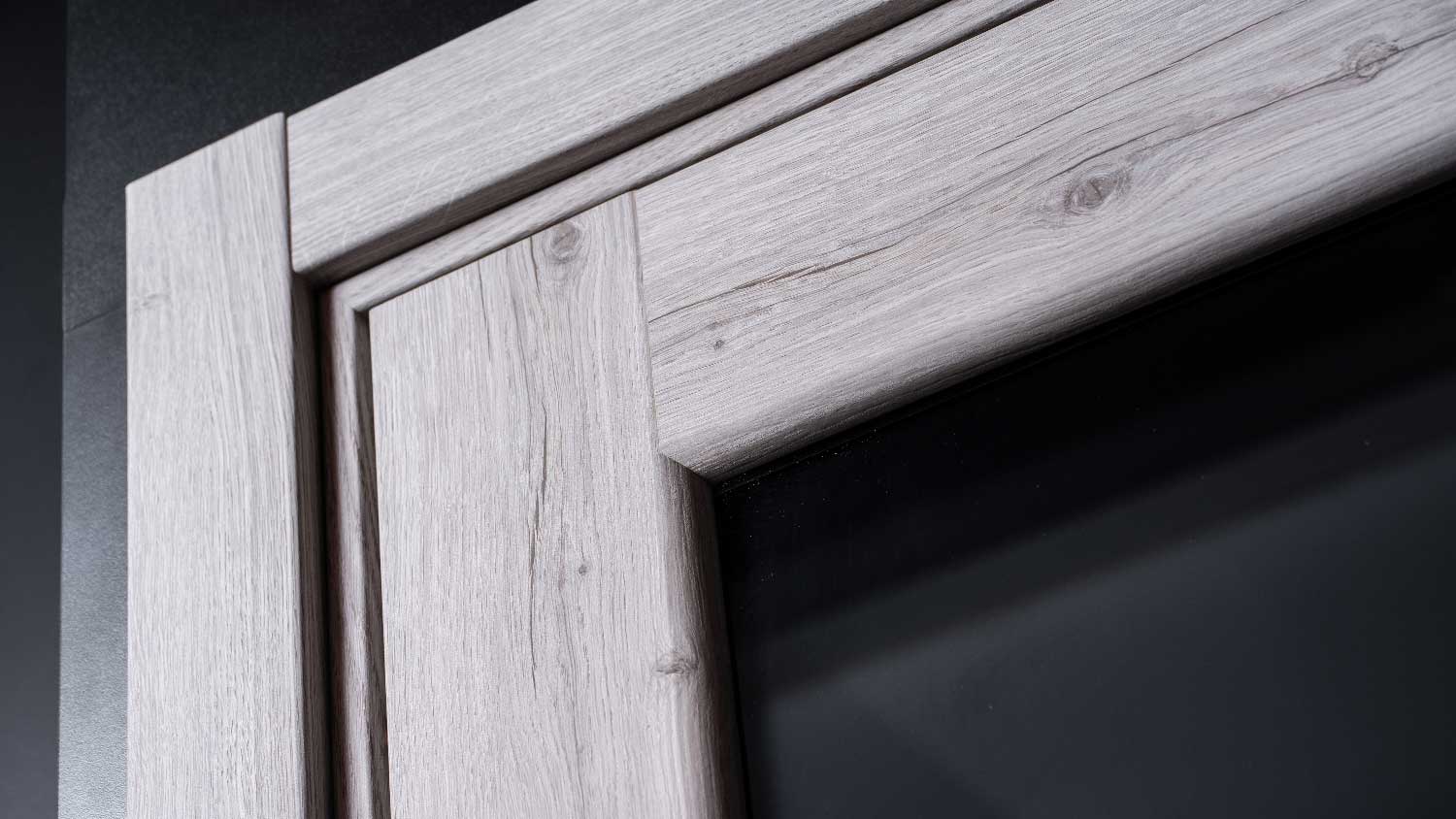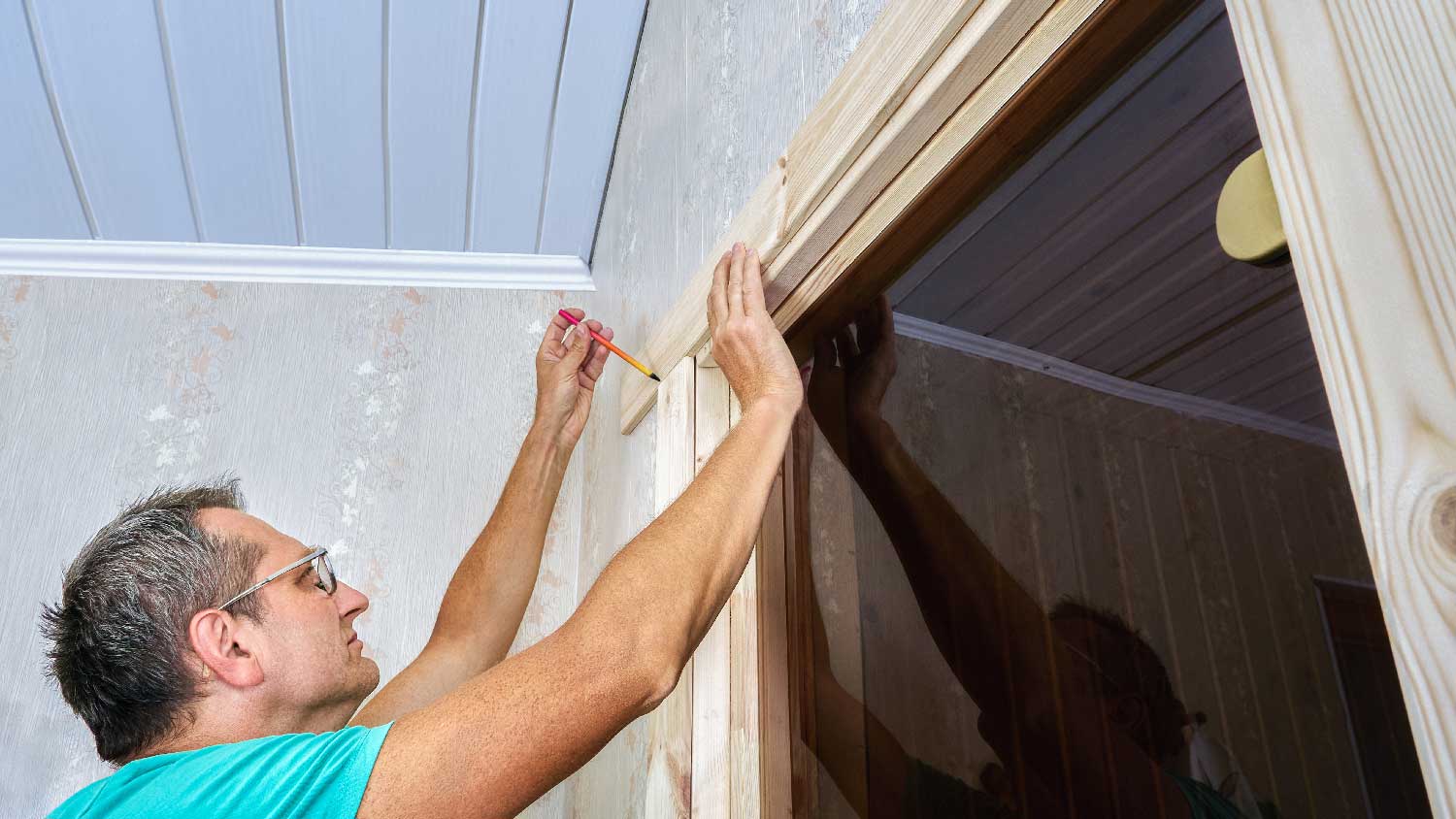
Are you looking to upgrade an old door in your home? Use this interior door installation cost guide to estimate the project's total cost and learn how to save.
Split jamb doors prove that sometimes two is better than one


Split jamb doors are a type of pre-hung door.
A split jamb is made from two pieces of wood instead of one.
These are installed when a wall isn’t plumb, or the rough frame is wider than standard.
Split jamb doors are more suited for interior doors.
There are a surprising amount of options when you want to install a door. If you also need to replace the framing, a split jamb door is an excellent option to make the installation smoother. This guide covers everything you need to know about this type of pre-hung door.
Split jamb doors are a type of pre-hung door. Unlike traditional pre-hung doors, which have a door jamb made from a single piece of wood, split jamb doors have a jamb made from two pieces of wood that fit together with a tongue and groove joint.
Two-piece jambs are used for a few reasons, mostly when a standard door would have an awkward fit or require difficult adjustments. You can use a split jamb when:
You have an older home with irregular walls: Sometimes, walls in older homes aren’t plumb and have an irregular thickness. A split jamb door offers a better fit for these situations.
Your rough frame is wider than standard: If the rough frame in your door opening is wider than standard, a split jamb door can help bridge the gap.
You’re looking for an easier installation: With a split jamb door, you install the jambs separately before hanging your door. This allows for quicker adjustments if your wall is less than perfect, making the installation process a whole lot simpler.
You need to replace the doorframe: If you need a new doorframe, installing a pre-hung door means you won’t have to build your frame. If you don’t need a new doorframe, you can choose a slab door and leave the existing framing in place.

A split jamb door contains all of the parts of a standard door plus a few unique added features. Since it’s a pre-hung door—and not a slab door—these parts are partially assembled for a more straightforward installation process.

Most split jamb doors include:
Door slab: The door has predrilled holes for the hinges and lockset if it’s not already attached.
Split jamb: This is the half of the jamb with the groove.
Main jamb: This is the half of the jamb with the tongue.
Casing: The door casing should already be attached to the jambs, so you don’t have to do it during the installation.
Hardware: Many pre-hung doors come with the hardware, including hinges and strike plates.
Shims: Some doors come with shims to help secure the doorframe.
Split jamb doors come in various materials, are adjustable for customization, and are easier to repair. If one side of the jamb is damaged, you can replace the section instead of replacing the whole thing.
The main difference between a split jamb and a solid jamb is the construction. A split jamb is made from two pieces of wood that fit together, while a solid jamb is made from a single piece. The construction impacts the performance, but a local door installer can help you decide which works best for your home. The main differences include:
Durability: Solid jambs are studier and preferred for external doors because they can better protect against the elements.
Versatility: Though you can trim solid jambs to size, a split jamb is easier to adjust to different wall sizes.
Repairs: Split jamb doors are less complex to repair than solid jamb pre-hung doors because you can replace parts of the frame rather than the entire frame.
Ease of installation: If you have standard-sized openings and straight walls, a pre-hung solid jamb door is simpler to install because there aren’t as many pieces. If your walls are kind of wonky, a split jamb door is easier to install.
New construction: If you’re installing a door in new construction, solid jamb doors are sturdier and will work in spaces with precise measurements. However, a split jamb door could be a better option in an older home where the walls could have irregular measurements.

For most homeowners, door installation costs $500 to $2,000. That said, if you’re handy and have prior experience, you can install the door yourself. Here’s how to install a split jamb door:
Measure the rough opening of the doorway: If the walls aren’t plumb, you may need to make adjustments.
Take apart the jambs: The jambs come nailed together for shipping purposes. Remove the nails and separate the two jambs.
Install the split jamb: First, install the split jamb (the piece with the groove). Make sure the casing is snug against the wall.
Install the main jamb: Use shims to secure gaps in the framing, then install the main jamb by sliding the tongue into place over the groove in the split jamb.
Keep in mind that some installations are more complicated than others. If your wall has irregularities that make installing a door difficult, hire a professional who installs doors to get the job done quickly and correctly.
From average costs to expert advice, get all the answers you need to get your job done.

Are you looking to upgrade an old door in your home? Use this interior door installation cost guide to estimate the project's total cost and learn how to save.

Screen door installation costs depend on size, type of frame material, and the number of doors. Here’s everything you need to know.

When adding a fresh new entryway to your home, you may be curious about the cost of sliding glass doors. Let's break it down by size, style, and design.

What is a strike plate in a door? It's one of many door parts, but this small piece is vital to a door's functionality and security.

Are you tired of your door sagging and defying your wishes to close properly? Say no more. Learn how to fix a sagging door with these methods.

If you are wondering who to hire to install weather stripping on your door, we share the best experts for fixing those pesky air gaps.